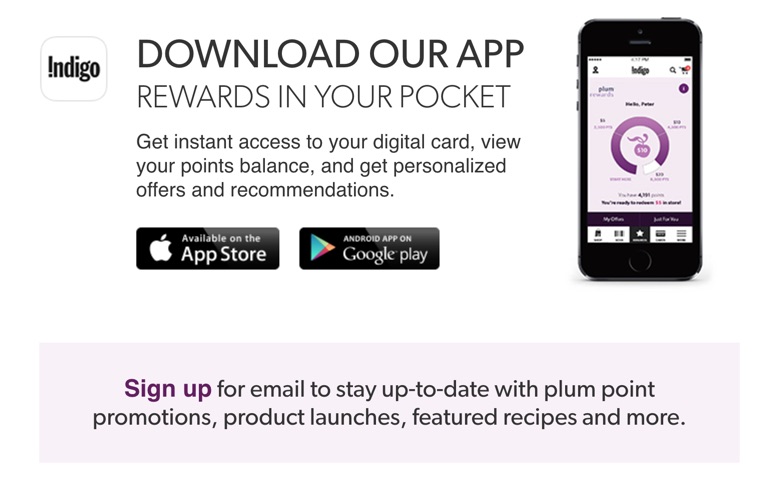You’re not alone.
In a saturated market, your ecommerce business is constantly competing to distinguish itself from other companies. It’s especially difficult when these businesses offer the same promotions to similar audiences.
You may sell the same types of products like your competitors. Your ecommerce store may even have identical pricing with others in the marketplace. So, it’s a challenge for your business to attract visitors and clinch the sale.
However, despite all these obstacles, there’s an opportunity for your company to stand out from the crowd of retailers. Whether it’s offering more value or finding new marketing channels, your team can still earn sales in a saturated market.
To generate more sales, start with what you know: the data. Here are five strategies to optimize your growth strategy.
1. Compete on Value, Not Price
By now, it may sound like a broken record: compete on value, not price. But it still rings true for most companies.
It’s hard to remain profitable if your team is constantly changing prices. You’re also training your customers to expect lower prices from your products. As a result, you earn less revenue and your store’s brand perception declines.
With a focus on value, you can offer customers a worthwhile experience, like one-click ordering, free shipping, or surprise bonuses. It’s all about what matters to them.
“Customers are getting used to advanced technology and expect a seamless shopping experience from online retailers. They want more options to pay for their order and expect more automation in the process. By working on these areas, you can certainly attract customers to your online store,” writes Manish Bhalla, founder and CEO of FATbit Technologies.
You can learn what to offer your audience through customer conversations. This qualitative data provides unique insight on what attracts people and keeps loyal consumers sticking with your brand.
For Target, their customers value multiple shipping choices. In the image below, you’ll notice a standard option and a ship to store option.
Differentiation doesn’t start with price. Instead, discover how to offer your audience value in other ways.
2. Carve Out a New Submarket
For some ecommerce stores, creating more value won’t be enough to gain buyers. Your business may decide to etch out a new submarket.
Tackling another audience segment doesn’t mean selling new products or changing your brand image to fit a different consumer base. Sometimes, it’s just tweaking who you sell to.
For instance, your online store currently sells high-end, scented candles to middle-aged women who enjoy your product during bath time. But based on customer inquiries and social media data, your team members learn that a few event planners are using your candles as decorative centerpieces.
With that information, your team might decide to add a new candle section dedicated to event planners. You also can develop content that shows them how others are using your product.
Yes, it’s not as easy as it sounds. It will take lots of ingenuity from your team. Angela Stringfellow, chief ideation officer at CODA Concepts, LLC., offers her thoughts:
“Whether that means reinventing industry standards, taking a new approach to the business model or offering something customers can’t refuse, carving a niche in the most saturated market is possible with commitment and creativity.”
The goal is to niche down and serve new populations. You want new audiences to start buying your products.
3. Connect Content Marketing to the Sales Pipeline
Businesses continue to use content marketing to attract and engage their consumers. It’s a chance to share information about monthly updates, new products, and highlight customers.
Yet, it’s common for most ecommerce brands to not associate content marketing with sales. Teams aren’t using their content to directly generate revenue. What they normally do is blast messages that only bring brand awareness.
If earning more revenue is important to you, it’s time to integrate your sales and content marketing strategies. You want to find ways to streamline the path from content to the checkout process.
Start by tracking your website activity to learn where your best customers come from. Is it from social? Referral sites? Your analytics dashboard can give you these details.
Then, create compelling content that entices the reader to purchase your products. And don’t limit yourself to a long-form blog post. You want to experiment with all types of content, including images, GIFS, and video.
The next step is to remove friction in the checkout process. What will turn potential buyers away? What can you do to stop them from abandoning their cart?
Pura Vida Bracelets promotes their content on Facebook. To get engaged fans to purchase, they offer an exclusive, time-sensitive discount on their fan page.
Content marketing isn’t always about branding. You can use it as a tool to move people down the sales funnel, too.
4. Explore Alternative Marketing Channels
While your market may be saturated, it’s possible that your business isn’t reaching all your ideal customers. You want to know where your audience eats, lives, and breathes.
A misconception amongst ecommerce store owners is that setting up a website and driving traffic through social media can sustain their business. But like everything in life, you can’t expect one channel to be your only source of revenue.
To help market your products, you can build strategic partnerships with other brands. Of course, this strategy takes many shapes and forms.
For example, you may try co-marketing opportunities with businesses with dissimilar products. Or you may begin an affiliate program where your best customers spread the word about your brand in exchange for a percentage of the sale.
By analyzing the psychographics of current customers, you’ll understand where to find alternative marketing channels. You can require customers to tell you their interests, favorite brands, and popular hangouts via a short survey. Then, use that data to find out how to connect with more potential customers.
Relying on one or even two ways to get buyers to your website isn’t sufficient. You can expand your reach by learning more about your customers and collaborating with partners.
5. Reward Existing Customers for Their Loyalty
When it comes to earning more sales, online stores are quick to devise plans to acquire new customers. You already know that customer acquisition can be costly. It takes money and your team’s time to bring in new buyers.
The other alternative is to build loyalty within your brand and sell to your existing customers. They’ve already purchased from your business and feel comfortable with your sales process.
You can start with a simple seasonal promotion or even prompt your customers to take action before receiving a cool bonus.
“Offer a referral bonus or reward for recruiting new customers. You don’t have to give a huge bonus to make a positive impact and increase referrals. Try providing a small discount or some company swag to show your appreciation,” states Ali Hyatt, marketing and product for Upward Labs.
Segment your audience to offer discounts to your most loyal consumers, like people who purchase two times per month. Also, be strategic about when you offer promotions; every reward doesn’t warrant a coupon.
Canada’s leading bookstore Indigo has built customer loyalty into their business. Their audience receives rewards through a point system. Participants can access all upcoming promotions and product launches via a mobile app.
Avoid neglecting your core customer base in a saturated market. They can bring in recurring revenue for your business.
More Sales Despite Saturation
A saturated market isn’t an excuse to abandon your ecommerce business. Opportunity still exists despite a sea of competitors in your industry.
Your team can develop a strategy to focus on value, rather than lowering your prices. You also can streamline the process from relevant content to sales. And of course, rewarding loyal customers can help boost your revenue.
Don’t get lost in the crowd. Earn more sales in a saturated market.
About the Author: Shayla Price lives at the intersection of digital marketing, technology and social responsibility. Connect with her on Twitter @shaylaprice.



No comments:
Post a Comment